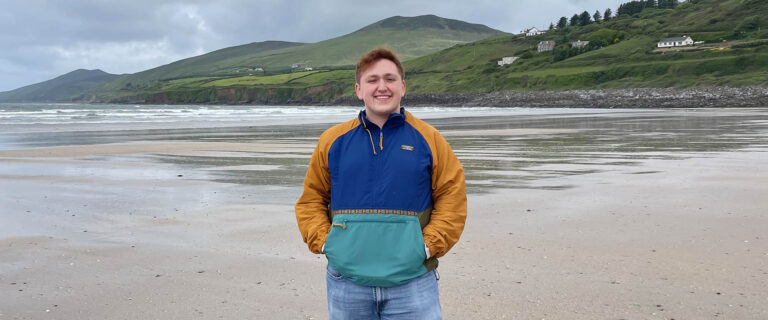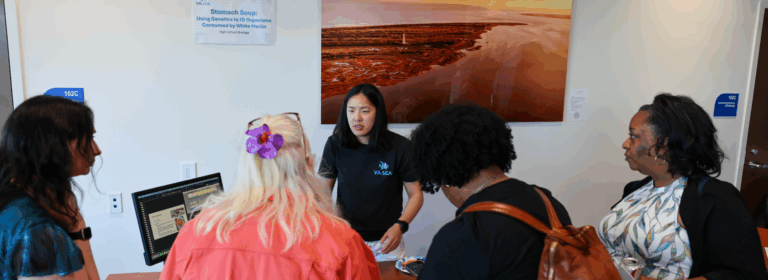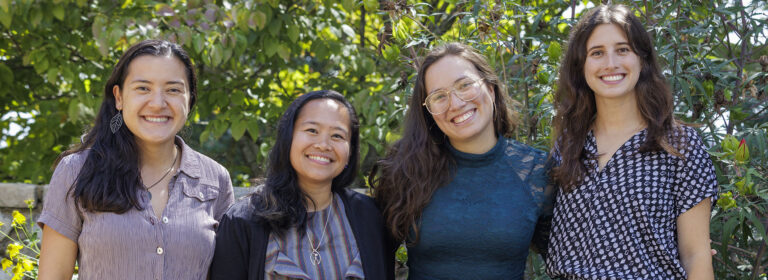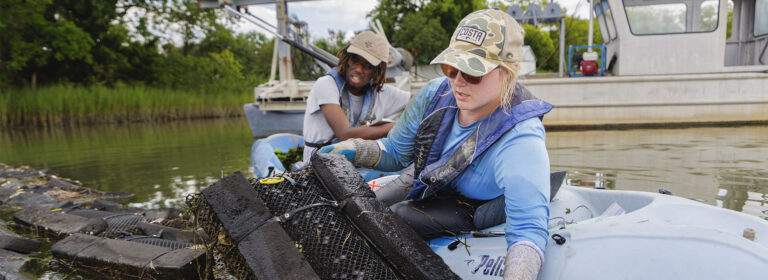Field course equips teachers to share coastal science in classrooms
Teachers might not be able to bring all their science students to the seascapes of Virginia’s Eastern Shore, but through the Teachers on the Estuary Field Course, they can bring coastal science back to their classrooms.
Middle-school and high-school teachers from across Virginia spent four days immersed in coastal field trips along the waterways of the Eastern Shore. The field course also gives teachers the experience leading outdoor investigations and equips them with hands-on classroom activities focused on coastal science. The field course was hosted by marine education specialists from the Virginia Institute of Marine Science Marine Advisory Program and the Chesapeake Bay National Estuarine Research Reserve and funded by the Friends of the Rappahannock.
The teachers started off each day exploring a different habitat. On the seaside, the group explored an oyster reef and mudflat, where they dug for worms and other invertebrates hiding in the mud. They also visited Cedar Island, a barrier island where shorebirds nest on the beaches, and dragged a handheld seine net through the shallow waters to catch small fish near the island.
“That field experience was definitely the best part,” said Kathryn Bender, a high school science teacher from Charlottesville. “It was re-energizing to get back in the field and remember, ‘Oh yeah, this is why I want to teach this. This is why this matters.’”
Along the side of the Eastern Shore facing the Chesapeake Bay, the teachers also visited a seagrass meadow, saltmarsh, a river sandbar, and a tidal creek. At each stop, they tested the water’s pH, measured the salt levels in the water, and lowered a frisbee-like disk into the water until it disappeared from sight to measure water clarity. The field trips were part of an overarching question developed by the teachers at the beginning of the workshop: What kinds of wildlife were present in seaside habitats compared to bayside habitats, and how might water quality contribute to any differences they observed?
“It modeled for them how they would have their students do the exact same thing: ask an investigative question, collect the data, come up with a claim from that data, and then determine if there is something we can do to improve the situation,” Marine Education Program Leader Lisa Lawrence said.
The field course format — outdoor investigation, data analysis, sharing results, and creating an action plan based on the findings — is a type of science lesson called a Meaningful Watershed Educational Experience, or MWEE. Although these types of projects can be more involved to plan and execute, students are more engaged in the learning process and better understand the connections between how the natural world works and human influence.
During the course of the workshop, the teachers each developed their own MWEE that they could use in their classrooms for the upcoming year. One teacher plans to compare biodiversity in a patch of native wildflowers, the athletic fields, and a wetland area that serves as a biofilter for runoff near the parking lot. After her students monitor and analyze the biodiversity, Bender’s students will determine whether biodiversity of different areas corresponds to the water quality and soil quality — an extension of the MWEE that she added on during the field course.
“It was awesome to have that time in a low-pressure situation where we can talk with the instructors,” Bender said. “That was an incredible resource to have those instructors and be able to ask, ‘’Hey, what do you think about this? How can I make this more relevant, make it more tied into what we did here?’”
“It was re-energizing to get back in the field and remember, ‘Oh yeah, this is why I want to teach this. This is why this matters,'” Bender said.
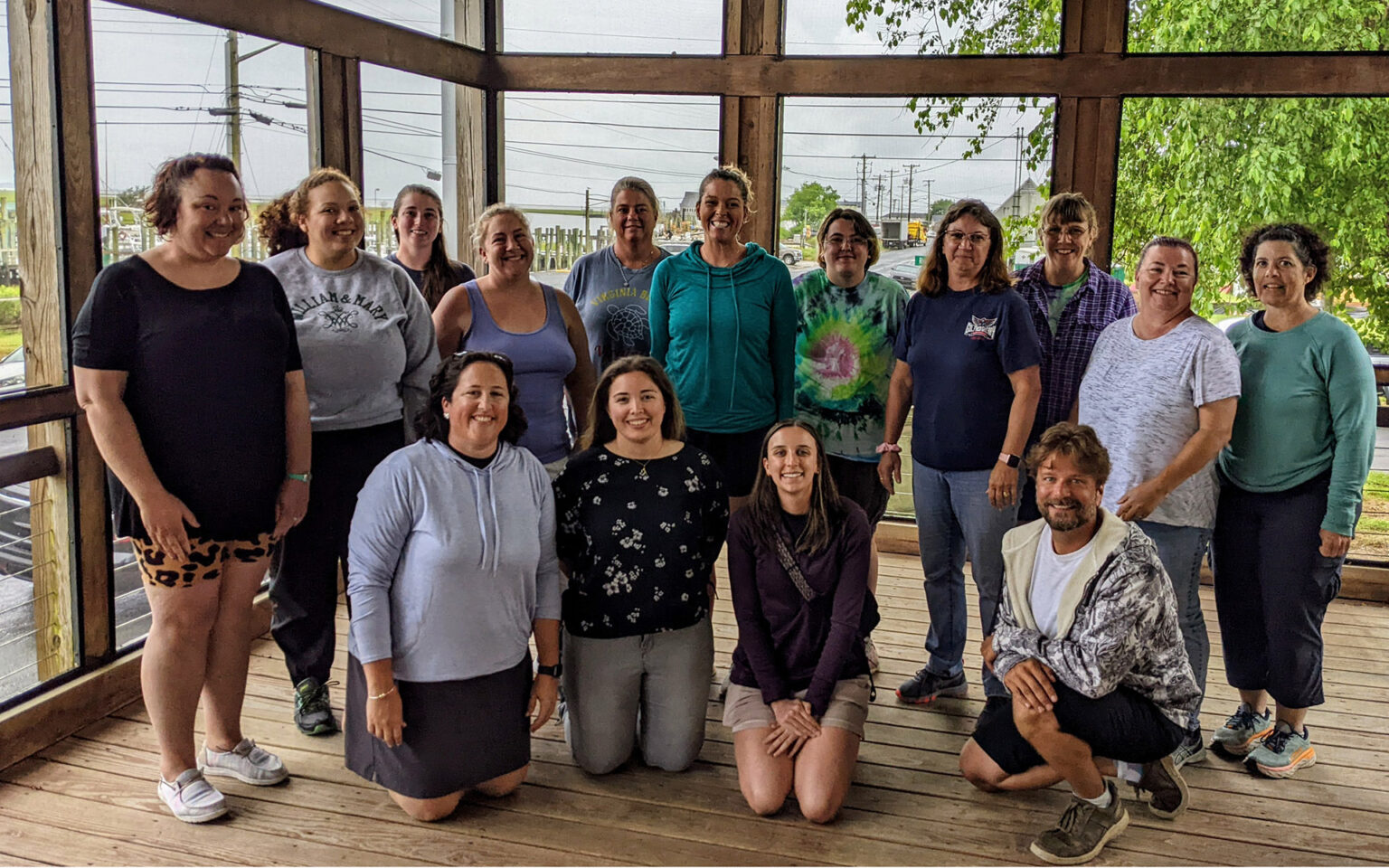
The field course gives teachers the experience leading outdoor investigations and equips them with hands-on classroom activities focused on coastal science.
After spending the mornings in the field, the teachers returned to the VIMS Eastern Shore Lab in the afternoons, where they tested out hands-on lesson plans that related back to the same habitats or concepts they had seen earlier in the day. Kathy Richardson, who teaches high school biology and marine ecology, said she incorporates information from the field course into many of her lectures. Even in classes like Advanced Placement biology, which have less flexibility in the curriculum, Richardson said she’s able to work in ocean examples while explaining concepts like food webs.
“A lot of the pictures I take during the field course end up in some of my lectures and my activities. They do a lot of really good hands-on activities that are really low-cost, so they’re not hard for a teacher to replicate in their classroom,” Richardson said.
Many of the lesson plans demonstrated during the workshop are developed through the VA SEA program, the scientists and educators alliance, which translates graduate research into teacher-vetted classroom activities. In these lessons, students walk through the same investigative process as real researchers, and develop critical analysis skills.
Field experiences like collecting plankton from the water gives teachers experience with the scientific sampling methods they can use with their students — even if the class collects plankton from a pond, rather than the ocean.
“The teachers really seemed to have a good time, and really connected with the material and each other,” Lawrence said. “It always makes those experiences even more valuable when you bond as a cohort and continue to connect with one another after the workshop.”
Takeaways:
- Middle-school and high-school teachers from across Virginia spent four days immersed in coastal field trips along the waterways of the Eastern Shore.
- The field course gives teachers the experience leading outdoor investigations and equips them with hands-on classroom activities focused on coastal science.
The field course was hosted by marine education specialists from the Virginia Institute of Marine Science Marine Advisory Program and the Chesapeake Bay National Estuarine Research Reserve and funded by the Friends of the Rappahannock.
Video by Aileen Devlin | Virginia Sea Grant
Photos by Celia Cackowski and Kathy Richardson
Story by Madeleine Jepsen | Virginia Sea Grant
Published July 6, 2022.
“A lot of the pictures I take during the field course end up in some of my lectures and my activities,” Richardson said.

